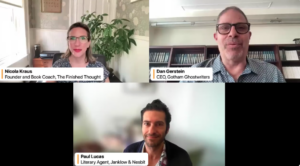
Being a great editor is hard. You must at once be naive and wise, omniscient and humble, impatient and implacable, sympathetic and uncompromising. You must think like a reader, like a writer, and like yourself.
Here are 10 vital strategies to master the contradictions of being a great editor.
1. Critique as a reader, not as a writer
You must master the art of naive reading: putting yourself in the shoes of a reader encountering a piece for the first time. Anything a reader would have trouble with — narrative issues, bias, word choice, euphony — you must spot it.
2. Focus on the writer’s goals, not your own
It’s easy and natural for an editor to wrestle control of the piece away from the writer, because editors are writers, too. This is a mistake. Your job is to allow writers to best express their ideas in their own voices, not your ideas in your voice.
3. Analyze why problems happen and how to solve them
All editors can find problems. Great editors use their knowledge of how writing works and of a particular writer’s issues to know why something is a problem. For example, a writer’s implicit assumptions may lead to prose that only an insider would understand, or their lack of storytelling discipline may lead to narratives that jump around. Using that knowledge, you can then suggest several different ways to solve the problem.
4. Edit at multiple levels
A versatile editor is just as adept at lifting and shaping ideas, fixing structural challenges, and getting paragraphs and words to sing. Because writers must to do all of these things, you must be able to help with all of them.
5. Read every draft with a fresh eye
Drafts create a history between the writer and editor. But because that history is invisible to the reader, it should make no difference to how you read the draft. You must do a naive read on each draft, and then use the history with the writer to decide what they need to address next.
6. Always critique the writing, never the writer
Editing is heady. You’re in a position of power, and of course, you’re pissed at the writer’s bumbling attempts to get things right. Abuse comes naturally to someone in this position. Resist it; it doesn’t help. Concentrate on the text and its problems, not the writers and their problems.
7. Recognize and make up for your own limitations
As much as they’d like to think so, editors are not omniscient. You must know your own limitations (lack of technical knowledge, for example, or stronger on words than ideas). Go find somebody with strengths that make up for those weaknesses and recruit them to review for the things you can’t see or can’t fix.
8. Love writing unconditionally
Editing is repetitive and never-ending. To have the stamina to keep doing it, you need to love words and ideas. That will keep you going as you edit pieces on every imaginable topic — or on the same topic for the forty-seventh time.
9. Have the creativity to compromise intelligently
Conditions are never ideal. The deadline is looming and there is no time for the full rewrite. The example the writer has found doesn’t fit perfectly. Corporate’s stupid policy mandates odd and counterintuitive language. Your job is to solve problems despite obstacles, not just to curse them and run away.
10. Never lose your sense of humor
Writing is an absurd task. The people who do it are unique and weird. The readers can’t be trusted. Their rules don’t always make sense, and breaking them can reduce the sense even further. If you’ve got a sense of humor, you’ll find this work endlessly diverting — and your attitude will buoy your writers. If you don’t, you’ll never succeed as an editor.
Josh Bernoff’s new book “Writing Without Bullshit” is now available for preorder. His blog is at bernoff.com.

This article was originally posted on Medium and can be found here.
Author
-
Josh Bernoff is the bestselling author of six books including "Writing Without Bullshit." He helps business authors to succeed. He blogs daily at Bernoff.com.
View all posts



